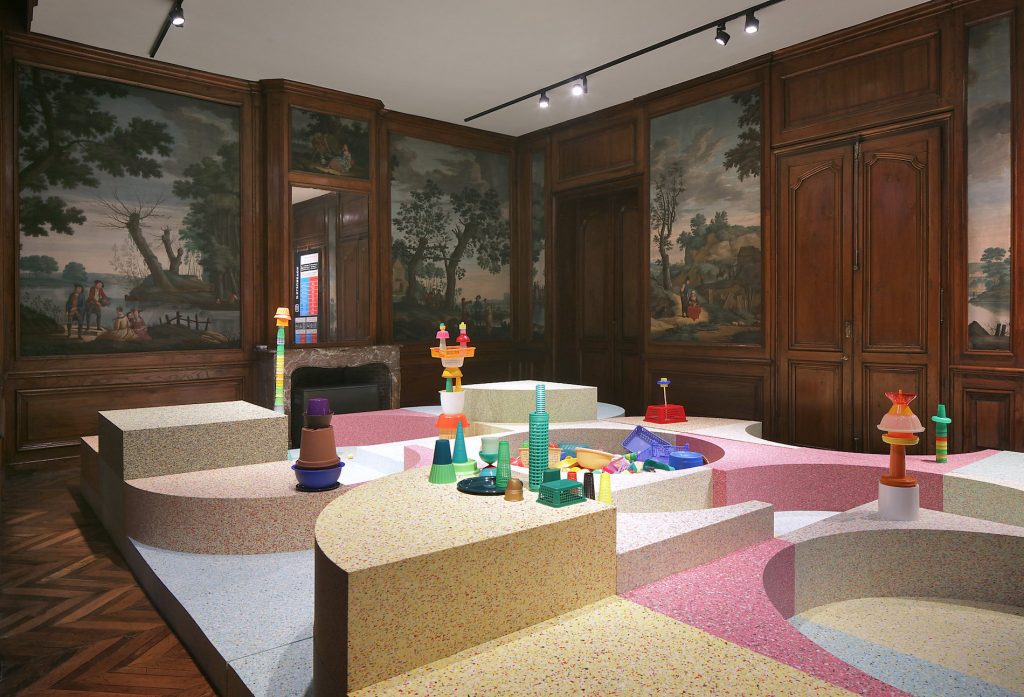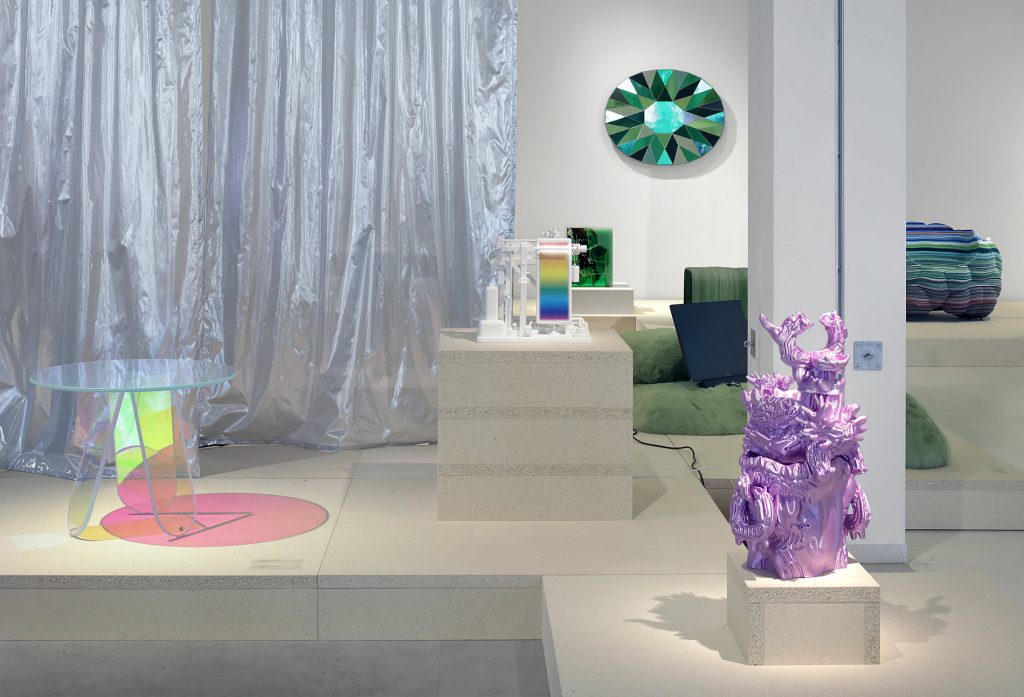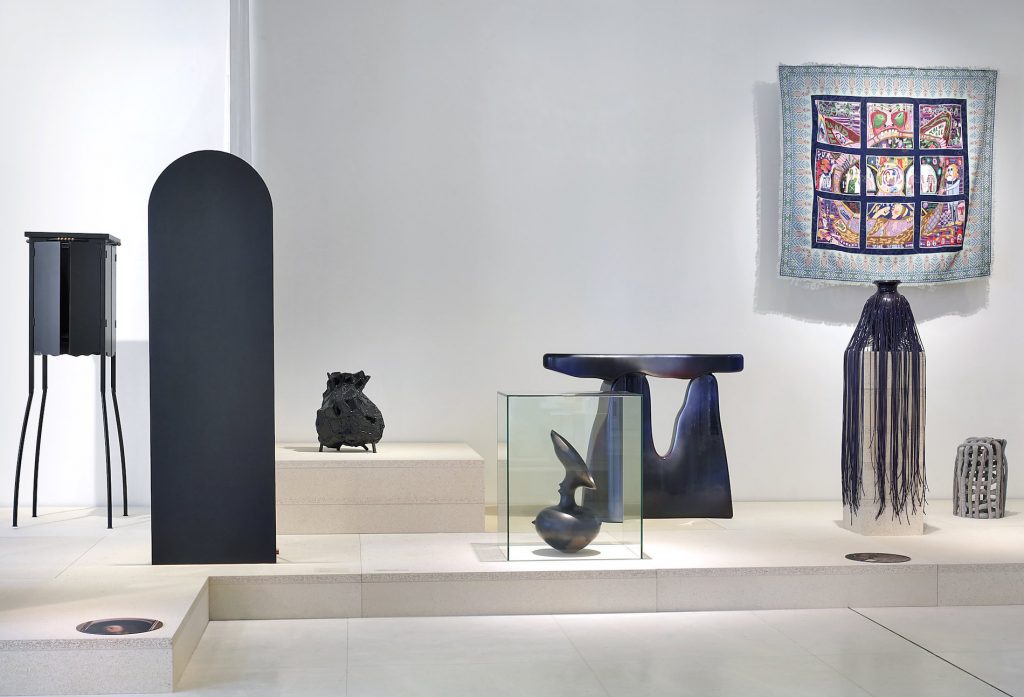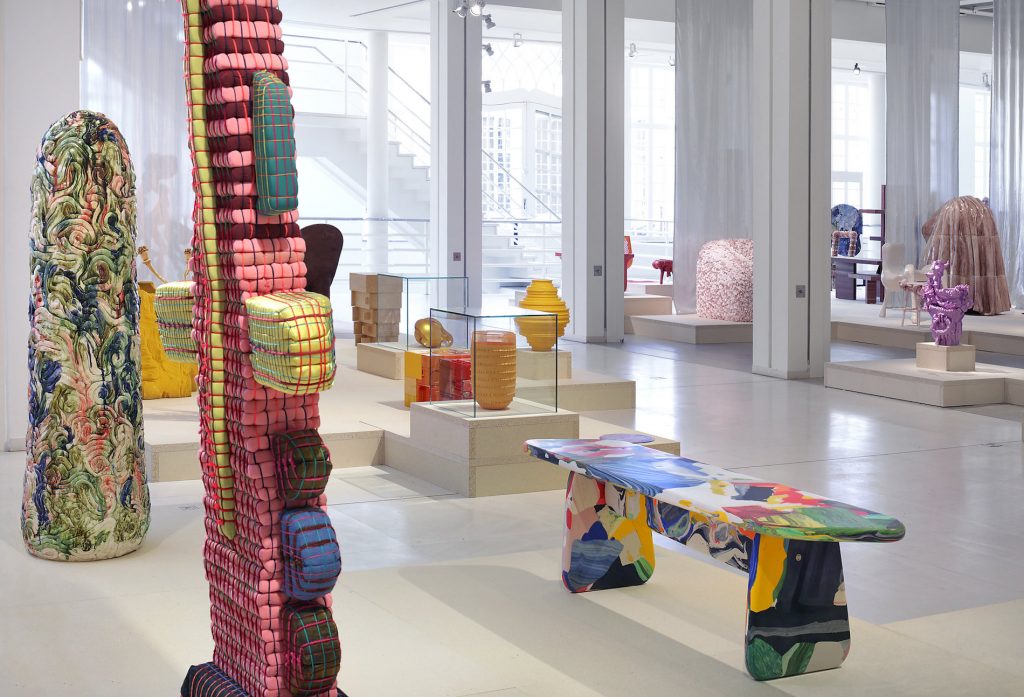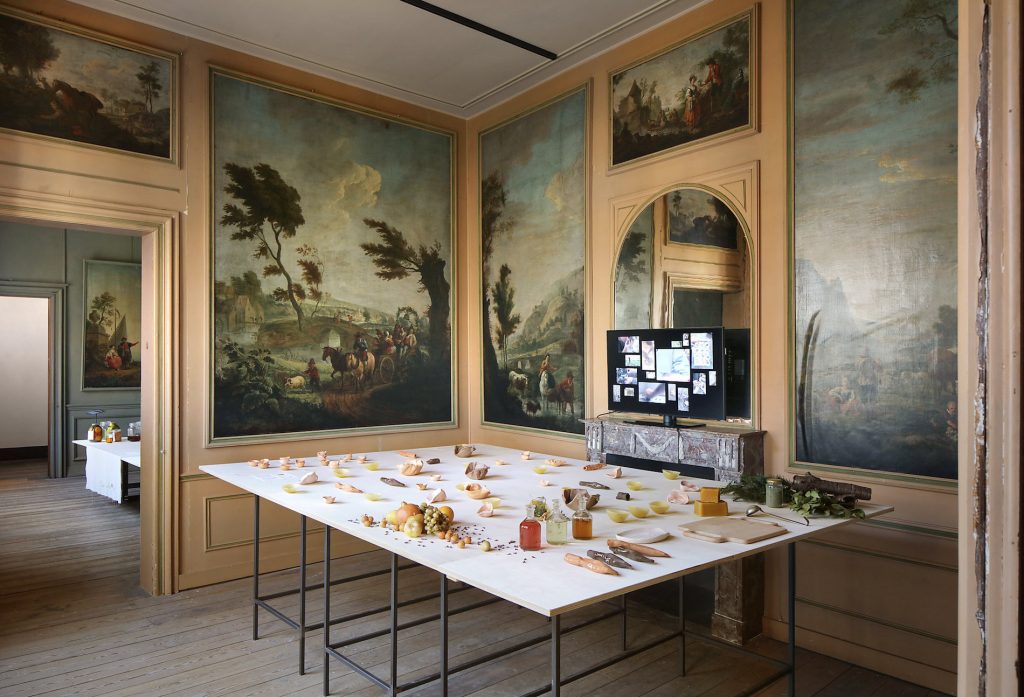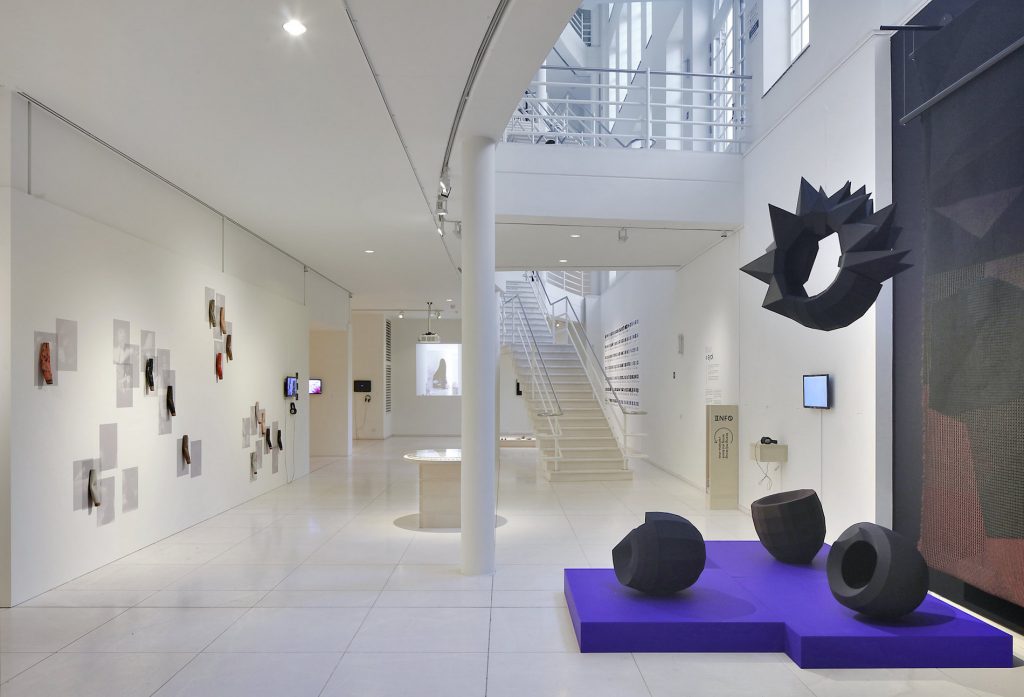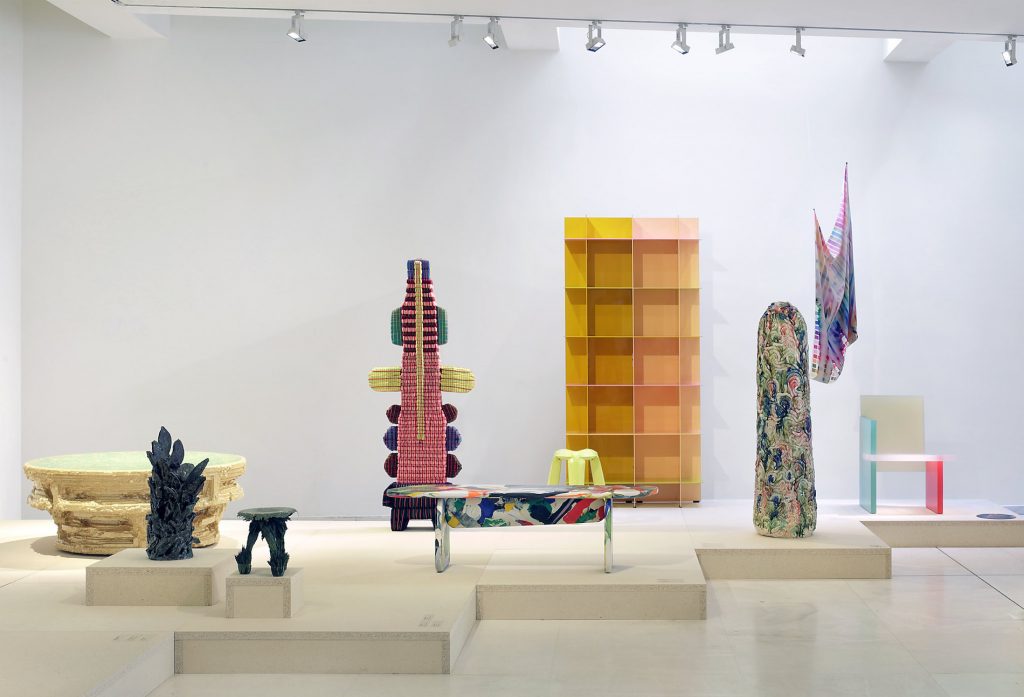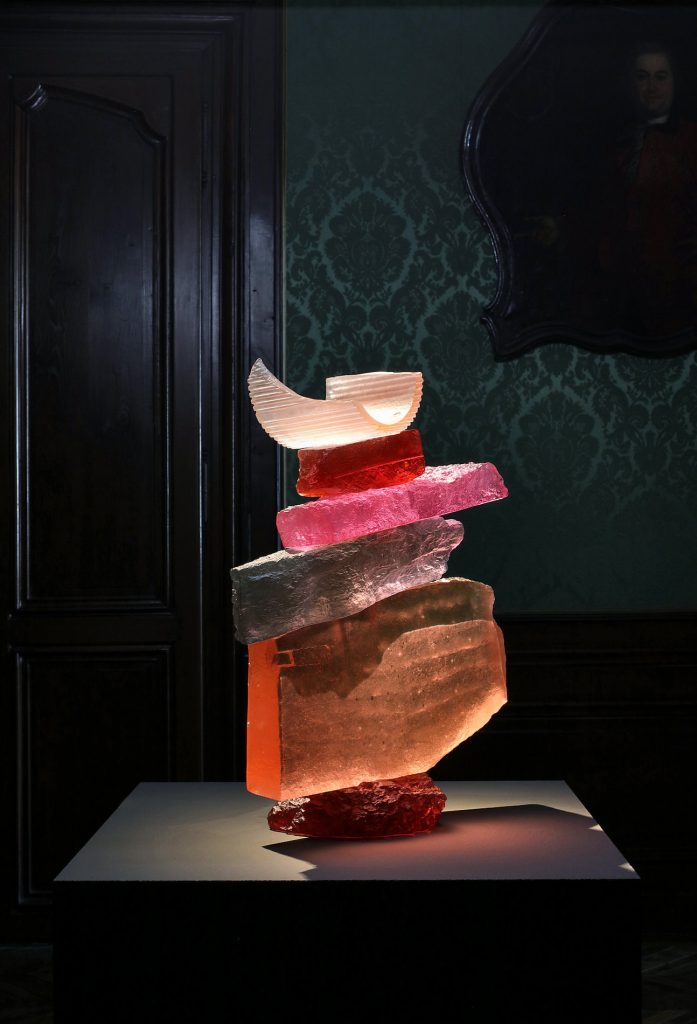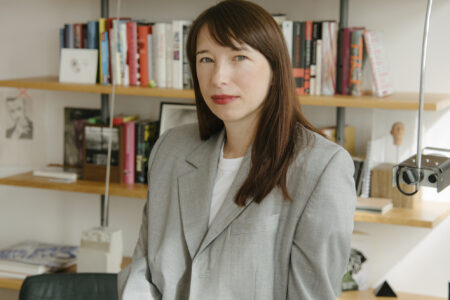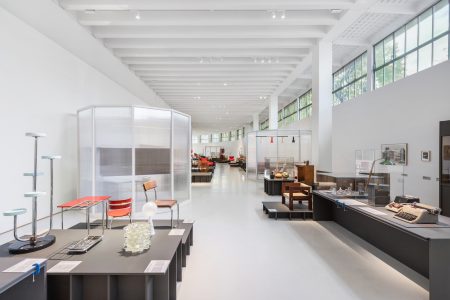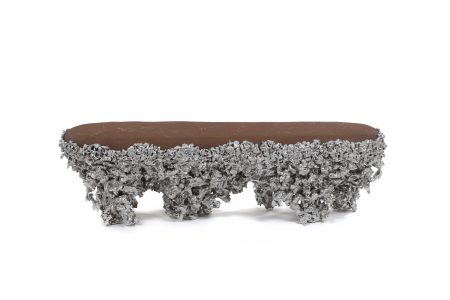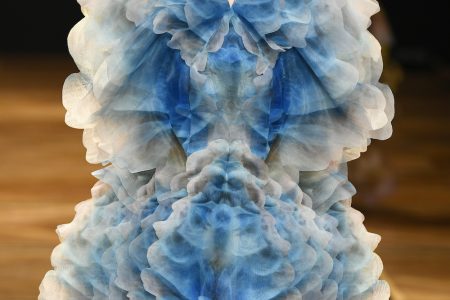Siegrid Demyttenaere: Colorful Research in Kleureyck
TLmagazine caught up with curator Siegrid Demyttenaere, to explore the exceptional curatorial framework of the Kleureyck exhibition in Design Museum Gent.
Design Museum Gent presents ‘Kleureyck. Van Eyck’s Colours in Design’ which features work of more than 100 Belgian and international contemporary artists and designers such as Anish Kapoor, Bela Silva, and Studio Rens. The designers and artists explore color in contemporary work through the lens of the iconic early Renaissance Flemish painter. Curator of this unique meeting of classic art and contemporary design is Siegrid Demyttenaere, known as founding partner and co-editor of DAMN° magazine, exhibition organizer and curator. TLmag caught up with Demyttenaere, to explore the exceptional curatorial framework and apparent increasing need for reflection within design.
TLmag: I was very curious about the exhibition narrative, and the curatorial framework, could you elaborate on this?
Siegrid Demyttenaere (SD): This is the year of Flemish artist Jan van Eyck, here in Gent. Within this framework, the director of the Design Museum Gent wanted to create an exhibition on contemporary design, which would involve the collection of the Design Museum and would be linked to Jan van Eyck. Since I’m not a historian, I was very uncertain about saying yes, but I wanted to do it because color and design is a great combination to work on. So I agreed but asked for time to really dive into the world Jan van Eyck.
After a while, I discovered that the main thing about Van Eyck’s work, which sets it apart from other early Renaissance painters, is that he knew a lot. He knew everything about optics, chemistry, architecture, perspective, and so on. He was not just a painter, I would rather describe him as a researcher. From that idea, I started to look at the colors he used and how he used them.
This really prompted the framework of the exhibition, which aimed to explore the relationship between color and contemporary design. Moreover, the framework provides for the possibility to explore the versatility of design, to explore how design is so much more than the final object.
I invited about 11 design practitioners to create an installation. The designers were asked to visit the restoration of Jan van Eyck’s ‘Mystic Lamb’ and to create an installation linked to that painting. This resulted in about 10 installations that are present in the exhibition with which visitors can engage. These installations are not just to look at but to understand, experience, taste, smell, and even feel.
TLmag: It sounds like an exhibition where engagement and experience are central.
(SD): The exhibition has three layers, the first exists of the experience rooms which takes shape as the previously described installations. Another layer entails the research projects, these are not specially made for the exhibition itself but are already existing projects which include different angles. Some included researches focus on the materiality of color, its pigments, psyche, social aspect. All these different angles of design and color are made visible through the research projects.
The third part, which is the outcome, is the pigment walk which is curated together with Sofie Lachaert, since she is focussed on crafts we selected these objects together. The collection of the Design Museum in Gent is quite craft-oriented, we included 20 pieces of it. In total, the exhibition presents a hundred objects, by contemporary designers, artists, and craftsmen.
In the selection of these objects, we created about 13 ensembles exploring details of the Mystic Lamb. For instance, you have the pink dress from Elisabeth Borluut -together with her husband Joos Vijdt, she commissioned the creation of the famous Gent Altarpiece- in the painting, which we made an homage to by selecting different objects. The idea is that people really get inspired and look at paintings in a different way by zooming into it, and try to link it to what is happening today.
TLmag: I was also wondering, the curatorial framework seems like quite an unconventional combination, right? Classic art and modern or contemporary design. I was wondering if you could talk a bit more about the conversation between these two.
SD: In the commission of the installations for the experience rooms, there was a lot of conversation with designers which was really interesting in this respect. This way of research or assignment, which entailed deep historic research into early Renaissance art, is not a usual way of working for the designers. There was a new world that opened up for them. If you read about Van Eyck and what he and his contemporaries did, and how they dealt with color and techniques, you really want to know more and more and more about it. It’s like some kind of an addiction, which is really how the designers encountered the research.
For instance, Studio Plastic dived into the color blue and really positioned themselves as researchers: how was it made, what materials were used, how did it look, and so on. It is quite interesting to deal with history and to show it in a contemporary way. I would describe it as a coming together of the old and new. That classic, historic work can still inspire young people was such a pleasure to find out.
TLmag: It sounds very interesting, taking themes from classic art or history, and reflecting on these in current times. It also seems like there is a growing need for historic reflection within design, how do you see this?
SD: Yeah, it’s nice to go back and then go forwards, you can learn so much from history. It is true that more designers are looking at art and art history nowadays. I feel like this can also give work an extra layer, more context.
As a curator, I also experienced this in the development of the exhibition. In the beginning, I did not have a lot of knowledge of the work of Jan van Eyck since I’m not an art historian. However, the process proofed to me that that does not matter actually. If you dive into it and are interested it is so easy to learn. And it really makes the eventual content so rich and layered, because of the research-based narrative.
There seems to be an urge for more reflection or context within design. I am also teaching at the School of Arts in Gent at the textile department, where I see students really diving into research before creating. The positioning of the designer has completely changed.
Where designers were interested in more functional design about 20 years ago, the main concern of the contemporary designer is to create a ‘fair’ world. More designers create work concerning the environmental crisis for example. The way in which designers are vocal about the cause has also changed, to a more conversational tone of voice.
TLmag: In this sense the exhibition really is a research-based exhibition, would you say that got close to your heart through the process?
SD: I really thought that was important for this exhibition, for it to be research-based and not only object-oriented. Also, the experience rooms are not about objects. The material reality is there, but it is rather about experiencing it and about the research connected to it. It is also important to say that design doesn’t have to be something finished and functional. It can be ongoing, reflective, and conceptual.
Kleureyck will be on show at Design Museum Gent until the 13th of May, after which it will travel. Since the museum is currently closed, due to the Covid-19 crisis, you can find their online program on their website where different participating designers elaborate on their work.
All following images: © design Museum Gent, photos: Filip Dujardin
